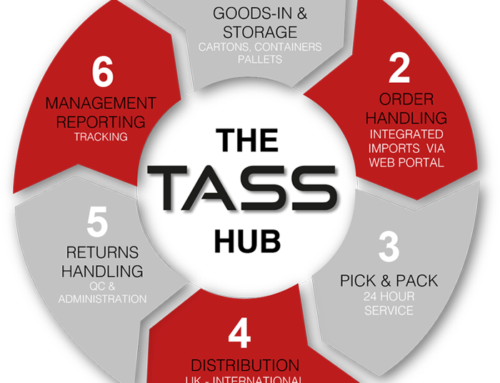The holiday shopping season represents the ultimate test for e-commerce businesses and their fulfilment operations. With peak season fulfilment demands often exceeding normal volumes by 300-500%, preparation isn’t just advisable—it’s essential for survival. Whether you’re handling fulfilment in-house or partnering with a fulfilment provider, scaling your operations effectively can mean the difference between record-breaking success and operational chaos.

Tass Hertford Warehouse workers at it!
Understanding Peak Season Fulfilment Challenges
Peak season fulfilment encompasses the critical period from Black Friday through to post-Christmas returns, when order volumes surge dramatically. During this window, businesses face unprecedented challenges including inventory shortages, shipping delays, and customer service bottlenecks. The stakes are high: a single fulfilment failure during peak season can damage customer relationships built over months or years.
Modern consumers expect the same rapid delivery times during peak season as they do year-round. This expectation, combined with compressed shopping windows, places enormous pressure on fulfilment operations to perform flawlessly when it matters most.
Strategic Inventory Forecasting for Holiday Success
Effective peak season fulfilment begins with accurate inventory forecasting. Start by analyzing historical sales data from previous years, paying particular attention to which products experienced the highest demand spikes. Factor in market trends, promotional campaigns, and economic conditions that might influence purchasing behaviour.
Implement a tiered forecasting approach that accounts for different scenarios. Conservative estimates help prevent overstock situations, while aggressive projections ensure you don’t miss sales opportunities. Consider the 80/20 rule: identify the 20% of products that typically generate 80% of your peak season revenue and prioritize their availability.
Work closely with suppliers to establish backup inventory sources and expedited delivery options. Many successful businesses maintain safety stock levels of 25-40% above forecasted demand for their top-selling items during peak periods.
Scaling Your Workforce for Increased Demand
Peak season fulfilment requires significant workforce scaling, often doubling or tripling staff numbers. Begin recruitment at least 8-10 weeks before peak season, as competition for temporary workers intensifies closer to the holidays.
Develop comprehensive training programs that can quickly bring temporary staff up to speed on your picking, packing, and quality control processes. Cross-training permanent employees across multiple functions creates flexibility when certain areas experience unexpected bottlenecks.
Consider implementing shift patterns that maximize operational hours without burning out your core team. Many successful operations run extended hours during peak periods, utilizing both day and night shifts to maintain continuous processing.
Technology Upgrades That Transform Peak Performance
Peak season fulfilment success increasingly depends on technological sophistication. Warehouse Management Systems (WMS) become critical for optimizing pick paths, managing inventory locations, and coordinating multiple staff members efficiently.
Automated sorting systems can dramatically increase processing speeds when order volumes surge. Even simple conveyor systems or automated packaging solutions can provide substantial efficiency gains during peak periods.
Real-time inventory tracking prevents overselling situations that create customer disappointment. Integration between your e-commerce platform and fulfilment systems ensures accurate stock levels are displayed to customers throughout the peak season rush.
Barcode scanning systems reduce picking errors when temporary staff are handling increased volumes. The combination of speed and accuracy becomes crucial when processing thousands of orders daily.

Tass operations for your business success
Partnership Strategies for Peak Season Success
Many businesses discover that effective peak season fulfilment requires partnerships with experienced fulfilment providers. Professional fulfilment centres offer scalable infrastructure, trained staff, and established carrier relationships that can handle dramatic volume increases.
When evaluating fulfilment partners, examine their peak season track record and capacity for handling surge volumes. Ask about their staffing strategies, technology capabilities, and backup plans for managing unexpected challenges.
Established fulfilment providers often have preferential shipping rates and guaranteed capacity allocations with major carriers—advantages that become invaluable when shipping costs spike and capacity becomes limited during peak season.
Carrier Relationships and Shipping Strategy
Peak season shipping requires careful carrier diversification and early planning. Establish relationships with multiple carriers to avoid capacity constraints that can cripple fulfilment operations during critical periods.
Negotiate peak season shipping rates well in advance, as carriers typically increase prices and impose surcharges during high-demand periods. Consider offering customers multiple shipping options, including premium services for last-minute shoppers willing to pay higher rates.
Implement cut-off date strategies that clearly communicate final order dates for various delivery promises. This manages customer expectations while preventing impossible delivery commitments that damage your reputation.
Measuring and Optimizing Peak Performance
Successful peak season fulfilment requires continuous monitoring and rapid adjustment capabilities. Establish key performance indicators including order processing times, picking accuracy rates, and shipping performance metrics.
Daily performance reviews during peak season allow for quick identification and resolution of emerging issues. Track customer satisfaction metrics closely, as peak season experiences significantly influence customer retention and brand perception.

Conclusion: Peak Season Fulfilment as Competitive Advantage
Peak season preparedness transforms what could be an operational nightmare into a competitive advantage. Businesses that master peak season fulfilment not only survive the holiday rush but use it as an opportunity to demonstrate superior service capabilities that drive customer loyalty and repeat business.
The investment in proper peak season preparation—whether through enhanced internal capabilities or strategic fulfilment partnerships—pays dividends far beyond the holiday period. Customers who experience exceptional service during high-stress peak seasons become your strongest advocates and most valuable long-term assets.
Start your peak season planning early, invest in the right infrastructure and partnerships, and watch your fulfilment operations become a true competitive differentiator in the marketplace.





